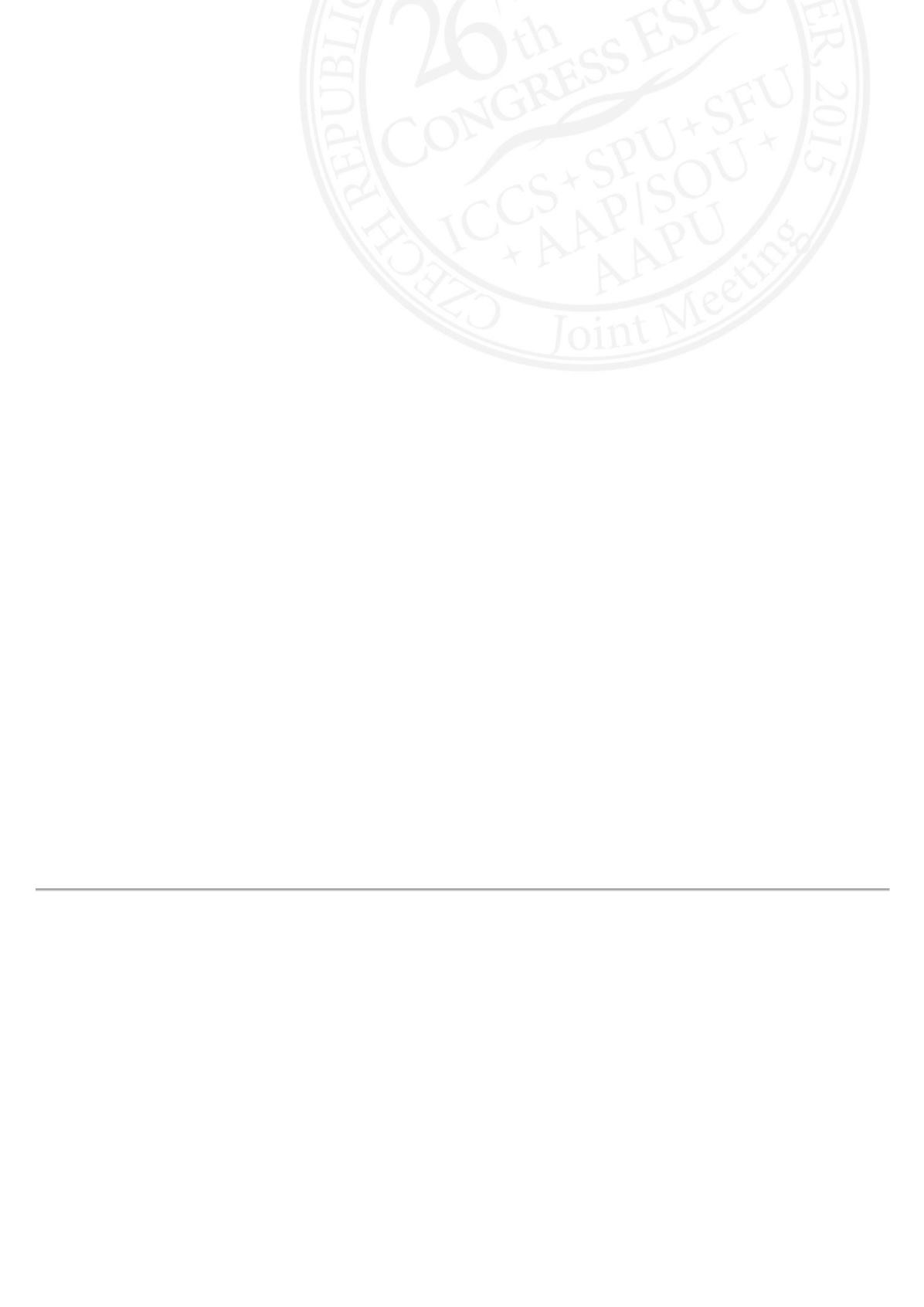

S20-11
(P)
WHICH IS THE APPROPIATE PNEUMOPERITONEUM PRESSURE IN PAEDIATRIC
POPULATION UNDERGOING LAPAROSCOPIC RENAL SURGERY?
Eva BLAZQUEZ-GOMEZ
1
, Luis GARCIA-APARICIO
2
, Enric MONCLUS
1
, Estibaliz AZPEITIA
1
, Dolors MOLIES
1
, Maria
URIBARRI
1
, Leidy DE ABREU
1
, Laura ORTUÑO
1
, Carmen PAMIES
1
, Albert SANCHEZ
1
, Esther BANUS
1
, Cristina
PASCUETS
1
, Marina PERELLO
1
, Belen DE JOSEMARIA
1
, Alejandra PRIETO
1
, Irune LANDAJUELA
1
, Alicia CHAMIZO
1
, Montse
SUAREZ
1
, Ferran MANEN
1
, Antonio GARCES
1
and Juan Jose LÁZARO
1
1) Hospital Sant Joan de Déu. University of Barcelona, Anaesthesiology Department, Barcelona, SPAIN - 2) Hospital
Sant Joan de Déu. University of Barcelona, Pediatric Urology Division. Pediatric Surgery Department, Barcelona, SPAIN
PURPOSE
Our aim is to evaluate the tolerance to pneumoperitoneum of pediatric patients during laparoscopic renal surgery and to
determine the risk factors of perioperative complications.
MATERIAL AND METHODS
From January to November 2013, we collected ventilatory, hemodynamic and temperature data, before and
during insufflation, of all patients undergoing laparoscopic renal surgery. Paired data were analyzed using the Wilcoxon
test and independent data with U-Mann-Whitney test.
RESULTS
We studied 21 patients with a mean age of 47.2 months and mean weight of 20.8Kg. All patients had a good
preoperative status. Mean operative time was 135.24 minutes. Mean insufflation pressure was 12.1mmHg at an average
speed of 3L/min.
Volume-controlled ventilation was set in 81% of patients. Respiratory rate was increased in 71% of patients with a
mean of 1.6±2.6 rpm. Recruitment manoeuvres were performed in 57% patients. PEEP was applied in all patients.
Compliance decreased in all patients (p<0.05). Peak inspiratory pressure and platteu pressure increased in 90% of
patients (p<0.05).
ETCO2 increased in 90% of patients by an average of 3,95±2,7mmHg(p<0,05). The increased was considered mild,
always <10mmHg. The greater variations were in cases of lower values of ETCO2 before the insufflation (p=0.001).
Oxygen saturation was over 97% in all patients.
Mean arterial pressure increased in 90% of patients by an average of 8.10±9.5. Heart rate decreased in 76% of patients
by an average of 7.76±8.7(p<0.05).
The evolution of hemodynamic and respiratory parameters was not related to the length of surgery, the pressure applied
to the pneumoperitoneum, the weight of the patient nor the ventilation mode applied (p>0.05).
Warming measures were applied in 81% of patients. Temperature decreased an average of 0.15ºC.
There were no surgical or anaesthetic complications and postoperative critical care was not required in any case.
CONCLUSIONS
In our study there was a good tolerance to higher insufflation pressures. Hemodynamic, respiratory and temperature
parameters remained within physiological ranges.












